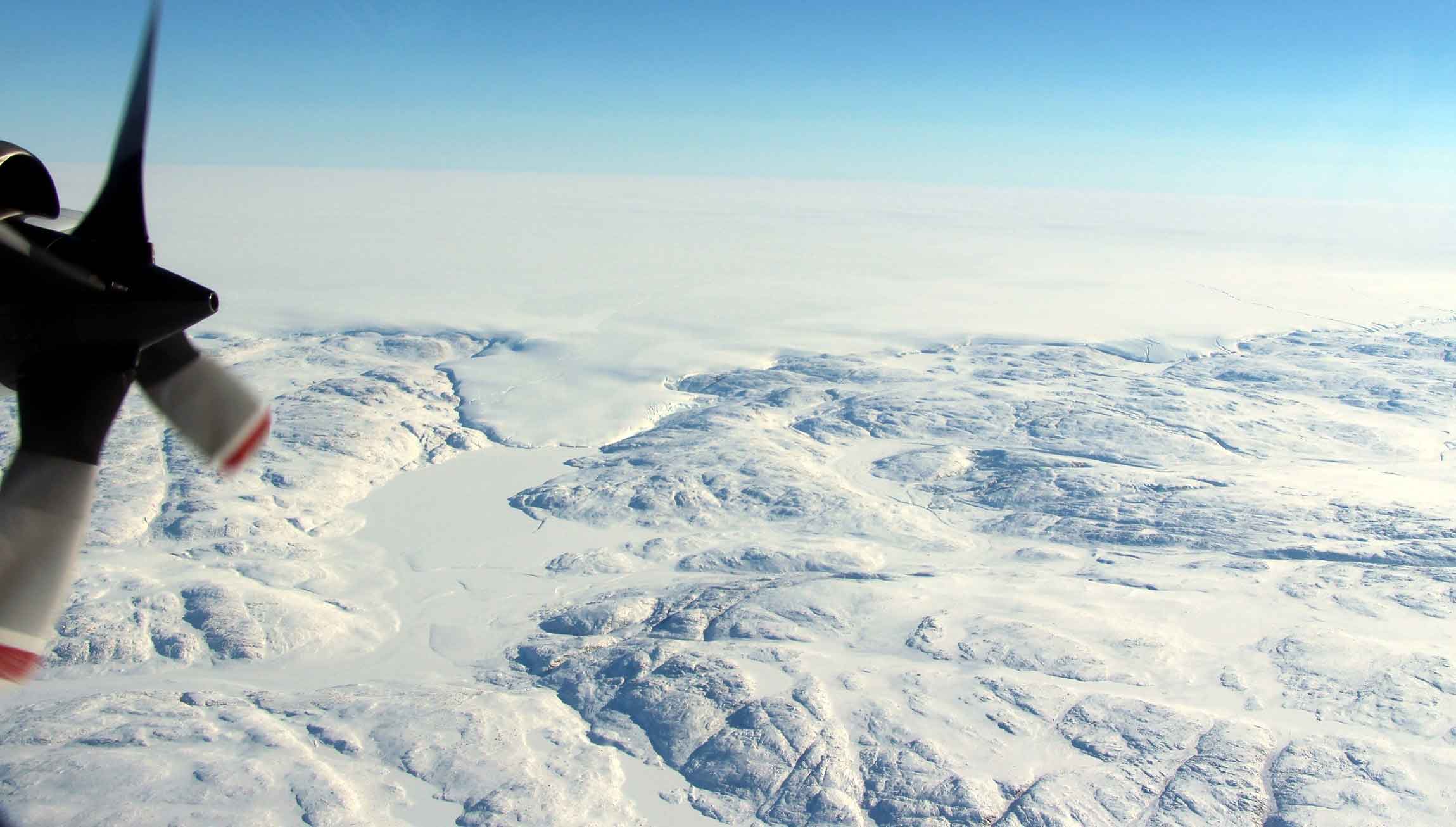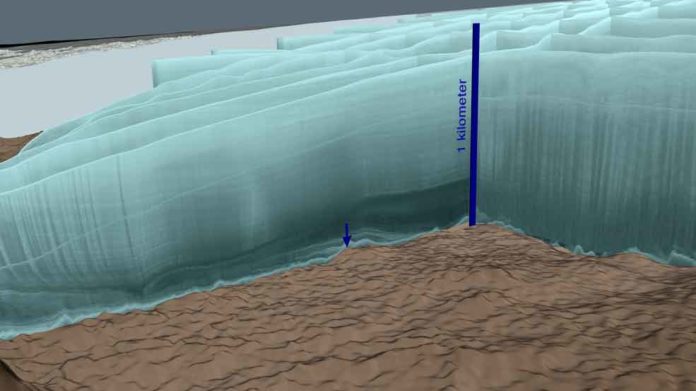A worldwide group of analysts, including a NASA glaciologist, has found a substantial shooting star affect pit stowing away underneath in excess of a half-mile of ice in northwest Greenland. The crater— the first of any size found under the Greenland ice sheet — is one of the 25 biggest effect holes on Earth, estimating about 1,000 feet down and in excess of 19 miles in width, a region somewhat bigger than that inside Washington’s Capital Beltway.
Joe MacGregor, a NASA glaciologist at Goddard Space Flight Center in Greenbelt, Maryland, who became involved in the investigation in its early stages said, “NASA makes the data it collects freely available to scientists and the public all around the world. That set the stage for our Danish colleagues’ ‘Eureka’ moment.”
Using satellite imagery from the Moderate Resolution Imaging Spectroradiometer instrument on NASA’s Terra and Aqua satellites, MacGregor also examined the surface of the ice in the Hiawatha Glacier region and quickly found evidence of a circular pattern on the ice surface that matched the one observed in the bed topography map.
Credits: NASA/Cindy Starr
To confirm their suspicions, in May 2016 the team sent a research plane from Germany’s Alfred Wegener Institute to fly over the Hiawatha Glacier and map the crater and the overlying ice with a state-of-the-art ice-penetrating radar provided by the University of Kansas. MacGregor, who is an expert in radar measurements of ice, helped design the airborne survey.
MacGregor said, “Previous radar measurements of Hiawatha Glacier were part of a long-term NASA effort to map Greenland’s changing ice cover. What we really needed to test our hypothesis was a dense and focused radar survey there. The survey exceeded all expectations and imaged the depression in stunning detail: a distinctly circular rim, central uplift, disturbed and undisturbed ice layering, and basal debris — it’s all there.”
The study suggests that the crater forms more than 4 million ago. When an iron meteorite more than half a mile wide smashed into northwest Greenland. The resulting depression was subsequently covered by ice.
Kurt Kjær, a professor at the Center for GeoGenetics at the Natural History Museum of Denmark and lead author of the study said, “The crater is exceptionally well-preserved and that is surprising because glacier ice is an incredibly efficient erosive agent that would have quickly removed traces of the impact.”

Credits: NASA/John Sonntag
“The crater’s condition indicates the impact might even have occurred toward the end of the last ice age, which would place the resulting crater among the youngest on the planet.”
In the summers of 2016 and 2017, the exploration group came back to the Hiawatha Glacier to delineate structures in the stone close to the foot of the ice sheet and gather tests of silt washed out from the dejection through a meltwater channel.
Associate professor Nicolaj Larsen of Aarhus University in Denmark, one of the authors of the study said, “Some of the quartz sand coming from the crater had planar deformation features indicative of a violent impact; this is conclusive evidence that the depression beneath the Hiawatha Glacier is a meteorite crater.”
